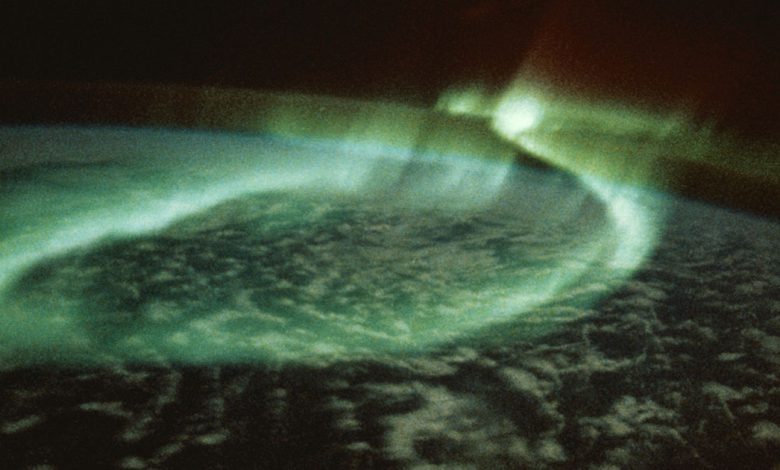The Earth May Be Swimming Through Dark Matter, Scientists Say

Dark Wave
Researchers suggest our planet is being battered by waves of dark matter, the elusive stuff that’s believed to make up 27 percent of the universe, though scientists have yet to observe it directly.
As science communicator extraordinaire Paul Sutter explores in a piece for Live Science, the European authors of a yet-to-be-published paper posit that radio waves detected in the Earth’s ionosphere — the part of the upper atmosphere where UV and X-ray radiation from the Sun ionizes atoms to create plasma — could be the result of particles interacting with dark matter, and therefore a great place to hunt for the evasive substance.
It’s an intriguing albeit speculative theory that could take decades of research to prove. Nonetheless, the prize is certainly worth playing for, potentially putting to rest one of the biggest unanswered questions about the universe that persists today.
Cosmic Slog
Over the years, scientists have proposed several candidates for dark matter, including extremely massive particles called “Weakly Interacting Massive Particles” (WIMPs) or extremely light ones called “axions.”
Thanks to axions’ highly unusual lightness, these hypothetical particles may act more like “large waves that slosh around the cosmos,” as Sutter explained.
That would also make them exceedingly difficult to observe. Instead of hunting for the particles themselves, scientists have long suggested looking for any interactions they have with other matter around them, including plasma, which is made of highly charged particles.
Now, a team of researchers from the University of Geneva and the European Organization for Nuclear Research (CERN) — which is at the forefront of our hunt for exotic particles — are suggesting a new place we could look: the Earth’s ionosphere.
By studying how “waves of hypothetical dark matter” interact with ionized particles, per Sutter, we could come one small step closer to answering one of the biggest puzzles facing astrophysicists today.
While it’s what Sutter calls a “long shot,” with the right instruments, we may just have a chance to finally uncover dark matter’s hidden identity.
“An electrically-small dipole antenna targeting the generated radio waves can be orders of magnitude more sensitive to dark photon and axion-like particle dark matter in the relevant mass range,” the researchers write.
Better yet, the ionosphere is extremely close to us, making it a tantalizing place to hunt for dark matter.
“This form of dark matter is highly theoretical, and it would take years, if not decades, to perfect the observation technique to search for these radio waves,” Sutter concluded. “But if it works, it would be a gold mine, allowing us to study one of the most mysterious elements in the universe right on our cosmic doorstep.”
More on dark matter: Our World May Be Connected to an Anti-Universe, Scientist Says
Source link



